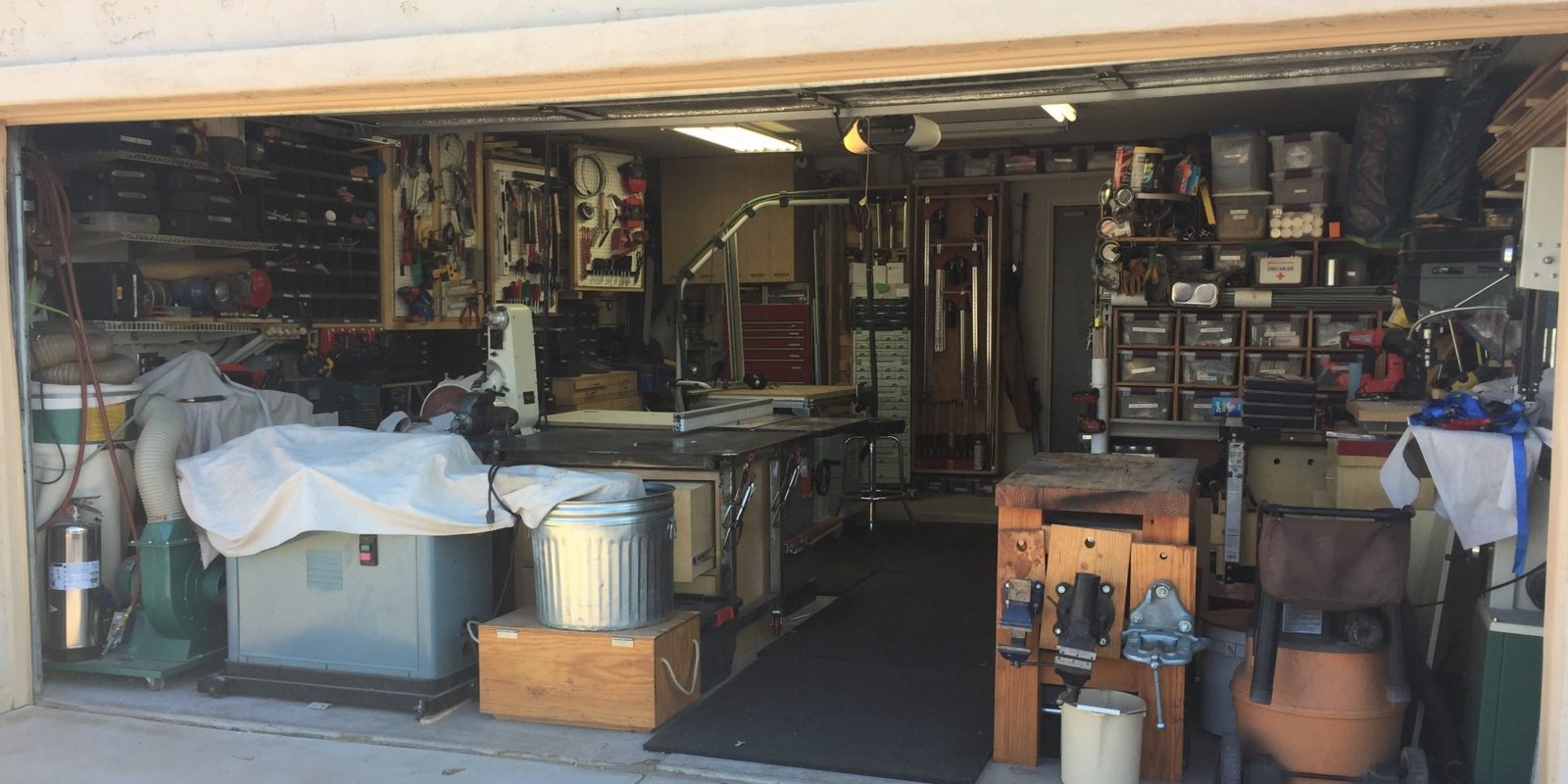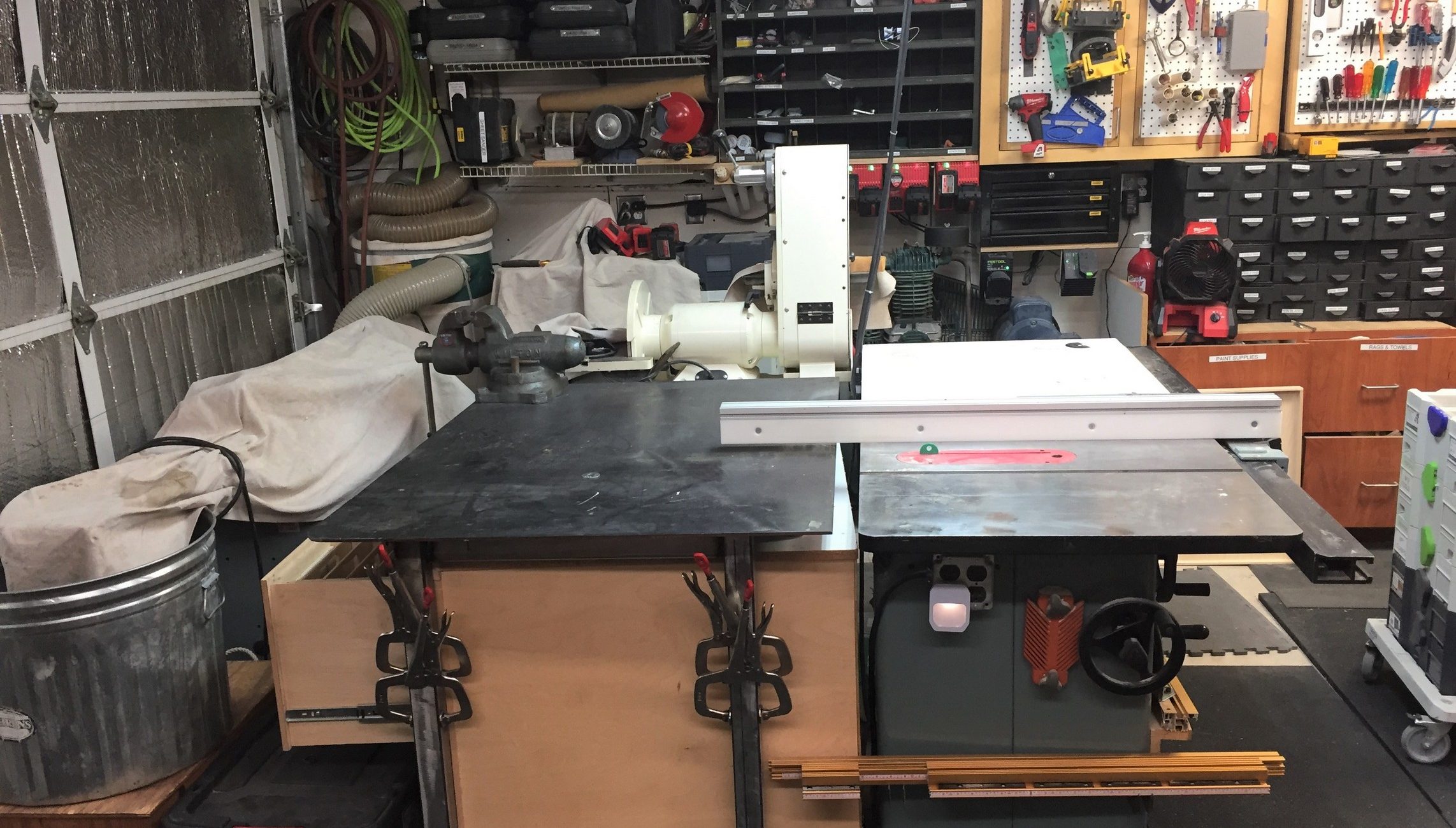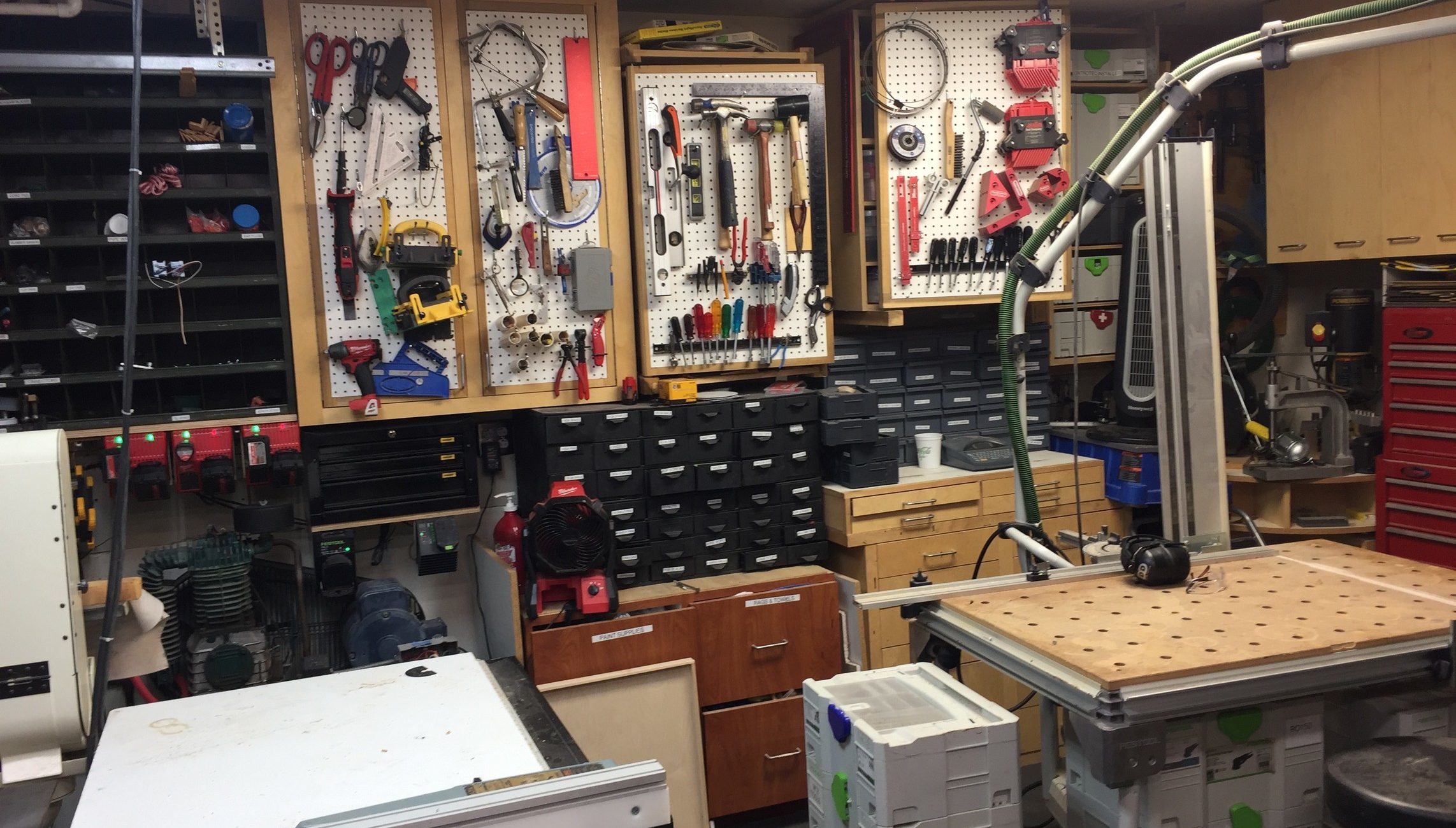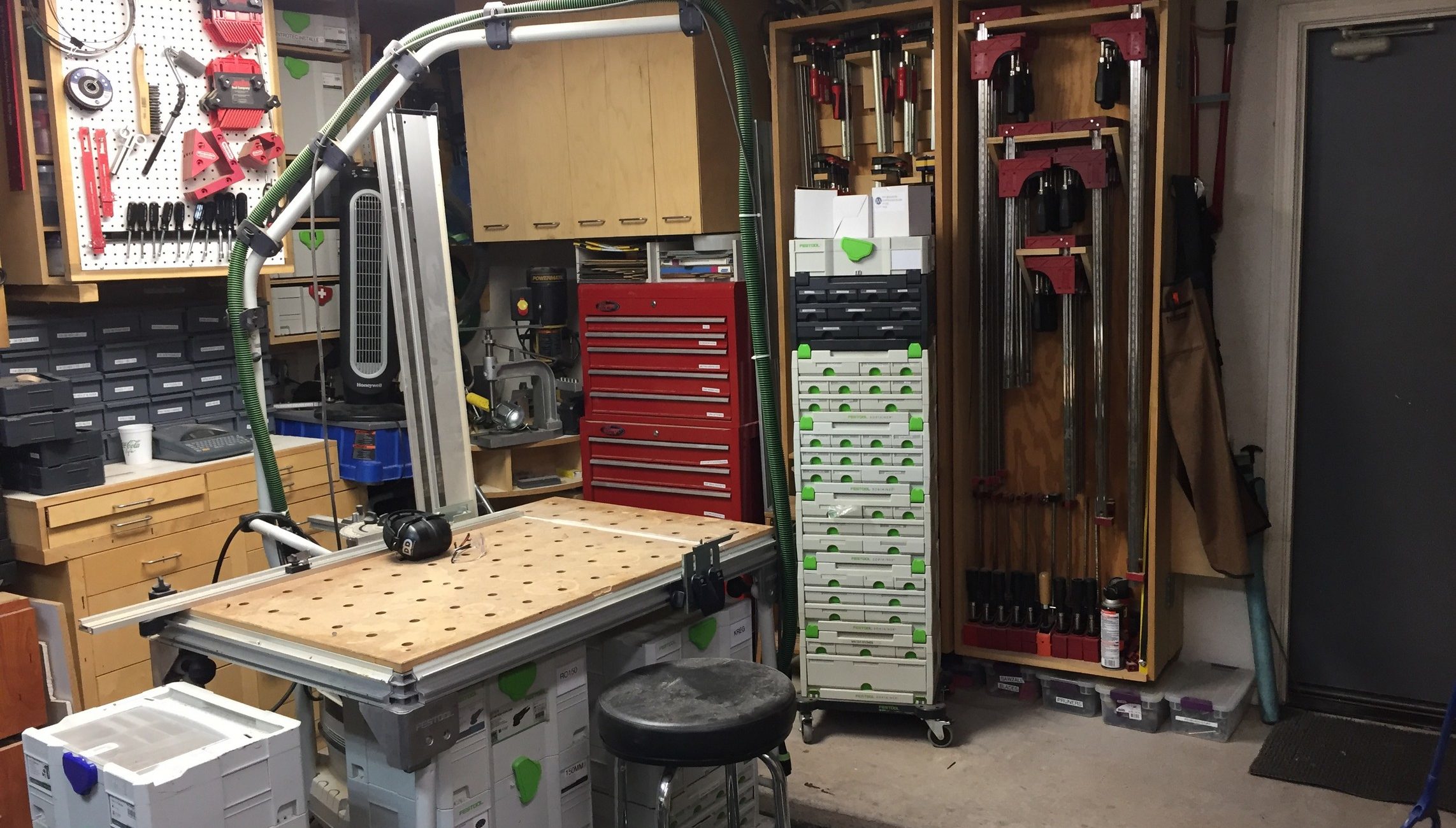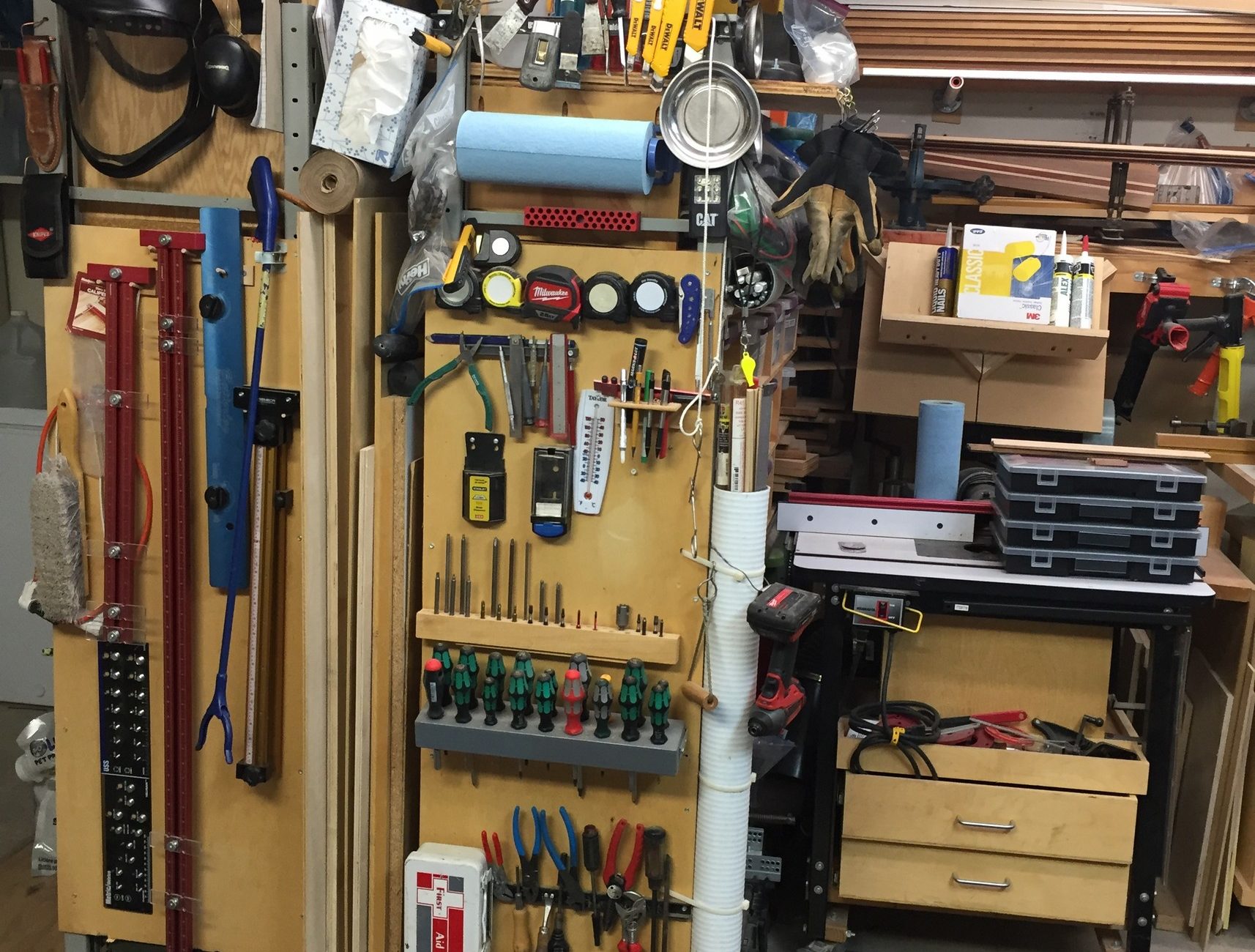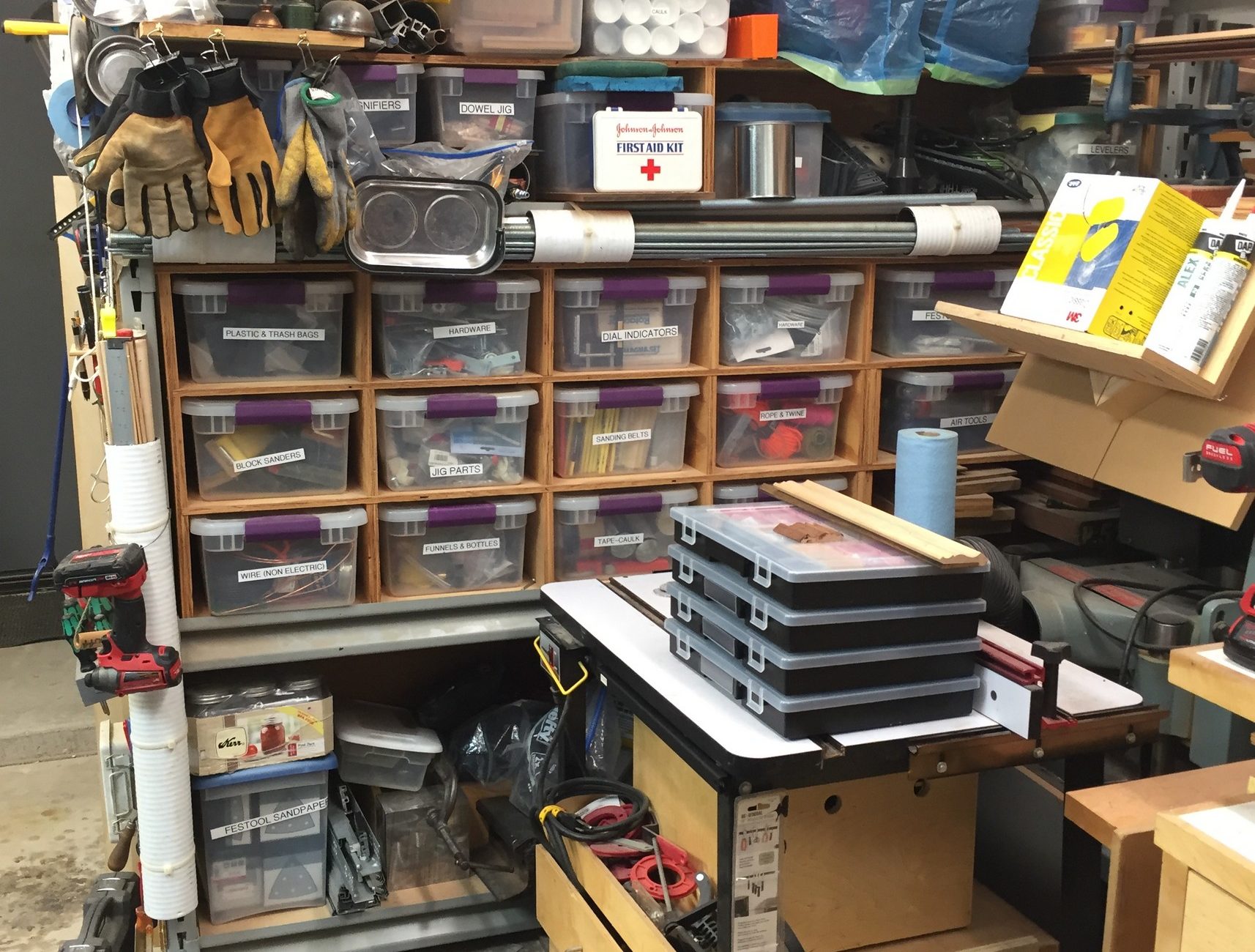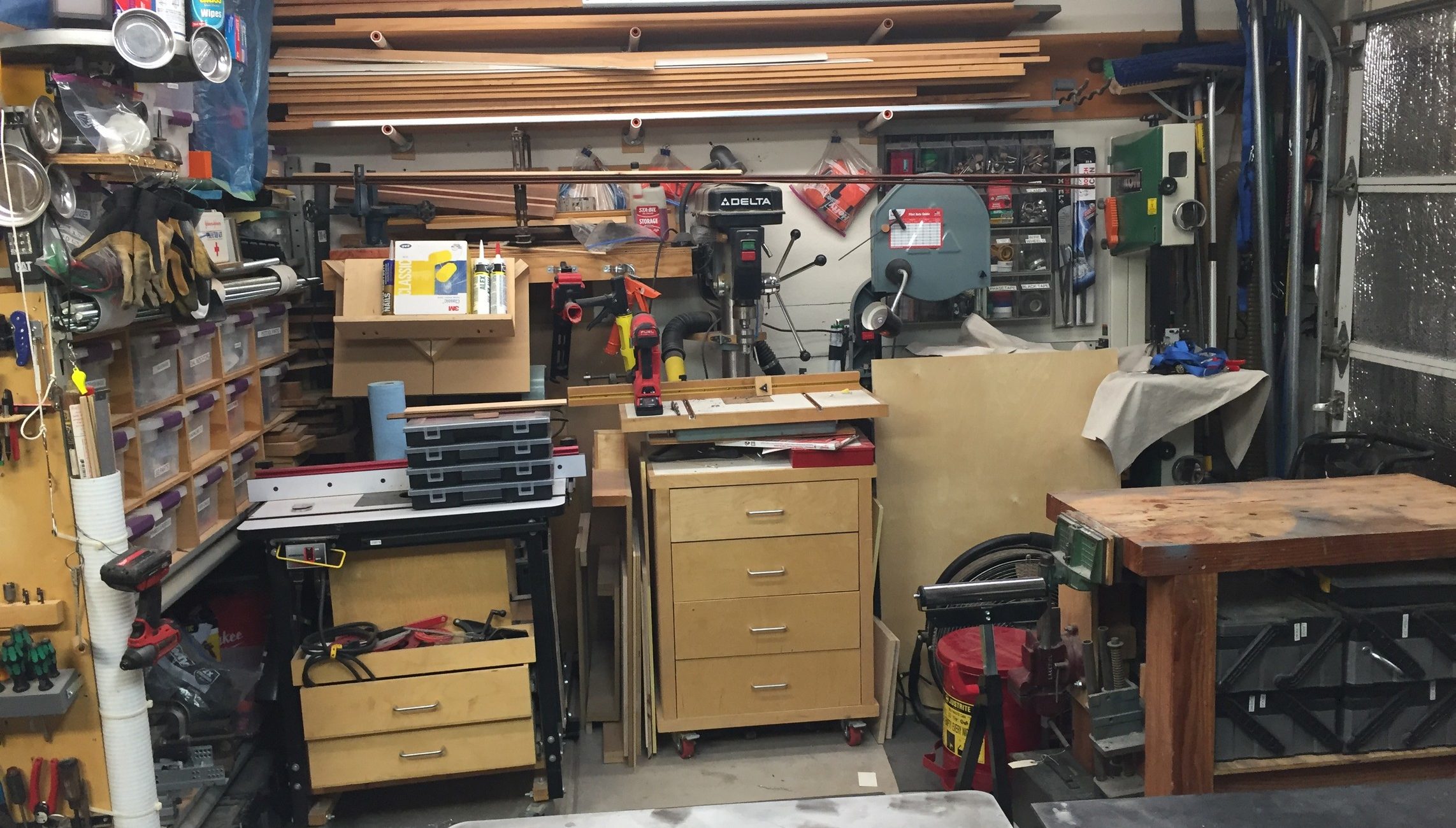The total garage size is about 22' by 22'. There is one 6' x 8' section that is used for regular household storage, the rest is my shop. Since I live in Arizona and don't have an air conditioner in the garage, the main door stays open most of the time I am out there. This allows me to use the driveway as a work area for all of my welding and my larger woodworking projects as well as increased airflow.
On the left you can see my Grizzly Dust Collector, an
Amerex 2.5 Gallon Water Fire Extinguisher,
a Delta DJ-20 Jointer. On the right side is a bench I built with three of
my vises - a cheap Colombian, a nice Wilton bullet, and a Ridgid 27 Bench Yoke Vise,
and my Ridgid 16 Gallong Wet/Dry Vac.
This vac was one of my early purchases and it has been great.
Here is my welding table and Delta Unisaw. Originally, the storage cabinet that is under the welding table was under the table saw extension and I had a foldable outfeed table for the Unisaw. After a few years, I decided I didn't need the full 52" rail capacity, so I cut it down and moved the cabinet to where it is now. I built the welding table specifically to straddle the storage cabinet. It is a piece of 1/8" hot rolled steel, sitting on some 2"x3" 1/8" rectangular tubing. The middle of the welding table is supported with some 2" x 1/4" flat bar welded in as ribs.
In the background is my Jet 6x48/12" disc/belt sander, my Steel City Oscillating Spindle Sander, and some shelving containing some grinders, buffers, and my pneumatic nailers and stapler. There is also a metal bolt bin that I use to store miscellaneous odds and ends. My air compressor sits on the floor below. It is a 30 gallon, 5hp RolAir unit that will put out 17cfm at 175psi. I looked for quite a while for a high performance compressor that would fit in approximately the same space as my previous 20 gallon portable. It was also a Craigslist find and so far it has met all my expectations.
The rest of the west wall contains more cabinets I have built over the years. The outer door of each of these was made with pegboard allowing quick access to some more commonly used tools. The first cabinet stores my woodworking planes, chisels, and good hand saws. The middle cabinet has two double sided pegboard doors and a shelf behind. It holds paint brushes, glues, and various speciality tools. The third pegboad cabinet has miscellaneous tools.
Below the cabinets, I have my chargers for my Milwaukee M18 and M12 tools, as well as two Festool chargers for my (so far) only non-Milwaukee cordless tools. I have three sets of metal parts cabinets. The first two are stacked and contain all sorts of stuff - fasteners, shop supplies, and tools. The grey metal cabinet is one of the few I purchased new. I use it to store several lengths of 1/4-20 fasteners, several sizes of SPAX wood screws, and other commonly used fasteners. I buy them in bulk whenever possible to save money.1
The floor cabinets store supplies and tools. The brown cabinet is
the only wood cabinet in the shop that I didn't make. I found it at
Goodwill for $20 and couldn't pass it up. All of my drawered cabinets
where build from Baltic Birch plywood using a Kreg Pocket Hole jig
for the joinery. I followed the process descriped in Tom Clark's
excellant book,
Practical Shop Cabinets.
| CXS Compact Drill Set |
TS 75 EQ Track Saw |
| RO 150 Rotex Sander |
ETS 150/3 Finish Sander |
Beyond the MFT is another cabinet I built for storing some of my less
commonly used woodworking tools, a lazy susan style cabinet holding another
grinder, a Powermatic PM701 Mortiser,
a Kreg Foreman,
a hand tapper, several routers, and most of my paint.
The red Craftsman toolbox contains most of my mechanic type tools - sockets, wrenches, files, screwdrivers, tap and die sets, and the like. Above that is a pantry style slide-out-shelving cabinet. It stores stains, lubricants, and other such items that would otherwise be hard to find on the back of a deep shelf.
The sorttainer stack contains mostly shop supplies and small or specialty tools. The bottom sorttainer in the stack holds all of my hand sharpening supplies - water stones, jigs, and diamond plates of varous courseness. Behind that is my clamp cabinet. It is two levels deep. The right 'door' hold my Jet Parallel clamps. Each bracket holds four clamps. The left 'door' is lined with french cleats holding most of my commonly used F-clamps. Opening these two doors reveals the interior, also lined with french cleats. In here is where I keep bar clamps, C-Clamps, and specialty clamps of all types. I have over 250 clamps stored in a 6' x 4' x 1' deep section of wall.
This is the endcap of my heavy shelving unit. It is directly behind my MFT, putting it right in the middle of my work area. I use this space to store my most commonly used tools.
The upper left side holds my personal protective gear - faceguard, ear
muffs, safety glasses - and my belt sheath tools - usually a Knipex Mini Pliers Set
but sometimes just a pair of slip-joint pliers. Below that are some of my
layout tools and a thread gauge.
On the right side, I keep various spray bottles across the top, followed by a magnetic bar with quickpoint knives and other tools. Below that are tape measures, marking devices, and spare blades. Next is a holder for 1/4" impact bits (for the M18 impact driver next to them) and a set of my most commonly used screwdrivers (Phillips, Square, Torx, and straight). Bottoming out the row are some pliers and cutters, with a 3/8" imact socket set on the floor beneath.
This is the south side of my heavy shelving. In order to make the large shelves more user friendly, I built a plywood grid designed to hold 15 quart plastic tubs. I have these labeled with their contents.
Above tbat is a piee of 4" pipe cut into sections holding various sizes of threaded rod. On top, buried beneath a bunch of shop supplies is my seldom used Dewalt DW788 Scroll Saw and more tubs of shop supplies.
On the corner of the rack is another 4" pipe containing some dowells, brazing rod, and my Starrett 36" hook rule.
Here we wrap up with the north wall. We start off with my router table, a Jess-Em table with a 3 1/2 HP Porter-Cable router. Below the table are two drawers containing router bits. Hidden behind the router table is a Delta thickness planer. To the right is my drill press and a cabinet containing various drill bits and drilling accessories. Next to that are my two bandsaws. The Delta is a standard 14" saw in which I keep a small blade (usually 1/8") for making tight radius cuts. The Rikon is dedicated to straight cuts and resawing.
On the wall behind is are some tilt out storage bins, a shelf holding my old Stanley miter saws, and a selection of hardwood lumber.
The bench in the corner is made from some scrap 2x6's I planed down and face glued into a 2 1/2" thick top that is about 42"x20". Below it I keep some Husky cantilever storage boxes containing fasteners and other supplies.
